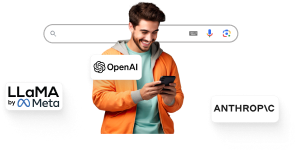Understanding Large Language Models: Insights into AI Interpretability

The article discusses the importance of understanding and interpreting large language models (LLMs), which are powerful AI systems used in various fields. These models, such as OpenAI's ChatGPT and Anthropic's Claude, have billions of connections and parameters that enable them to generate human-sounding responses. However, their inner workings are often referred to as "black boxes" since their behavior cannot be easily explained. AI interpretability research aims to shed light on how these models make decisions and identify potential biases or risks. Scientists approach the study of LLMs by using neuroscience-inspired techniques, analyzing their neural networks, and probing the activation of specific neurons. While the complexity of LLMs surpasses that of the human brain, researchers believe that understanding their inner mechanisms is achievable and essential.
By decoding LLMs, developers and users can gain insights into how these models process information and make predictions. This knowledge can help improve the safety, transparency, and trustworthiness of LLMs as they are applied in various domains such as healthcare, education, and law. Although the field of AI interpretability is still in its early stages, researchers are optimistic about making progress in understanding LLMs. They draw inspiration from neuroscience and explore different approaches that tackle the issue from various angles. While the complete explanation of LLMs may be elusive, incremental advances in interpretability can enhance our ability to comprehend and intervene in these powerful AI systems. However, more resources, funding, and collaboration are needed to accelerate research in this field.
Brief news summary
Anthropic, a tech startup, has created an AI assistant named Claude as part of a study on AI interpretability. The team wanted to understand how the AI model, Claude 3.0 Sonnet, interprets concepts and modifies its behavior based on that understanding. During the study, it was found that the model had a fixation on the Golden Gate Bridge and would link almost any query back to San Francisco and Marin County. This experiment highlights the need for developers to understand and modify how AI models interpret concepts to guide their behavior. Understanding how AI models encode biased, misleading, or dangerous features can help developers improve the behavior of AI systems. The field of AI interpretability is still in its infancy, but researchers are using techniques from neuroscience and biology to gain insights into the inner workings of AI models. By decoding the algorithms and mechanisms of AI models, researchers hope to make AI systems safer and more accountable.
AI-powered Lead Generation in Social Media
and Search Engines
Let AI take control and automatically generate leads for you!

I'm your Content Manager, ready to handle your first test assignment
Learn how AI can help your business.
Let’s talk!
Hot news

16 billion passwords leaked. Is it finally time f…
The 16 Billion Password Leak: What Really Happened?

AI in Manufacturing: Optimizing Production Proces…
Artificial intelligence (AI) is fundamentally transforming the manufacturing industry by optimizing production processes through advanced technology integration.

Independent Publishers File Antitrust Complaint A…
A coalition of independent publishers has filed an antitrust complaint with the European Commission, accusing Google of market abuse through its AI Overviews feature.

Congress Declares Crypto Week: U.S. Lawmakers Gea…
Key Takeaways: The U

Ilya Sutskever Assumes Leadership of Safe Superin…
Ilya Sutskever has assumed leadership of Safe Superintelligence (SSI), the AI startup he founded in 2024.

‘The world supercomputer’: Nexus activates final …
This segment is from the 0xResearch newsletter.

Tech Industry Collaborates with Pentagon to Enhan…
The collaboration between the U.S. technology sector and the Pentagon is intensifying amid rising global instability and the growing strategic relevance of artificial intelligence (AI).

 Auto-Filling SEO Website as a Gift
Auto-Filling SEO Website as a Gift








 Auto-Filling SEO Website as a Gift
Auto-Filling SEO Website as a Gift

